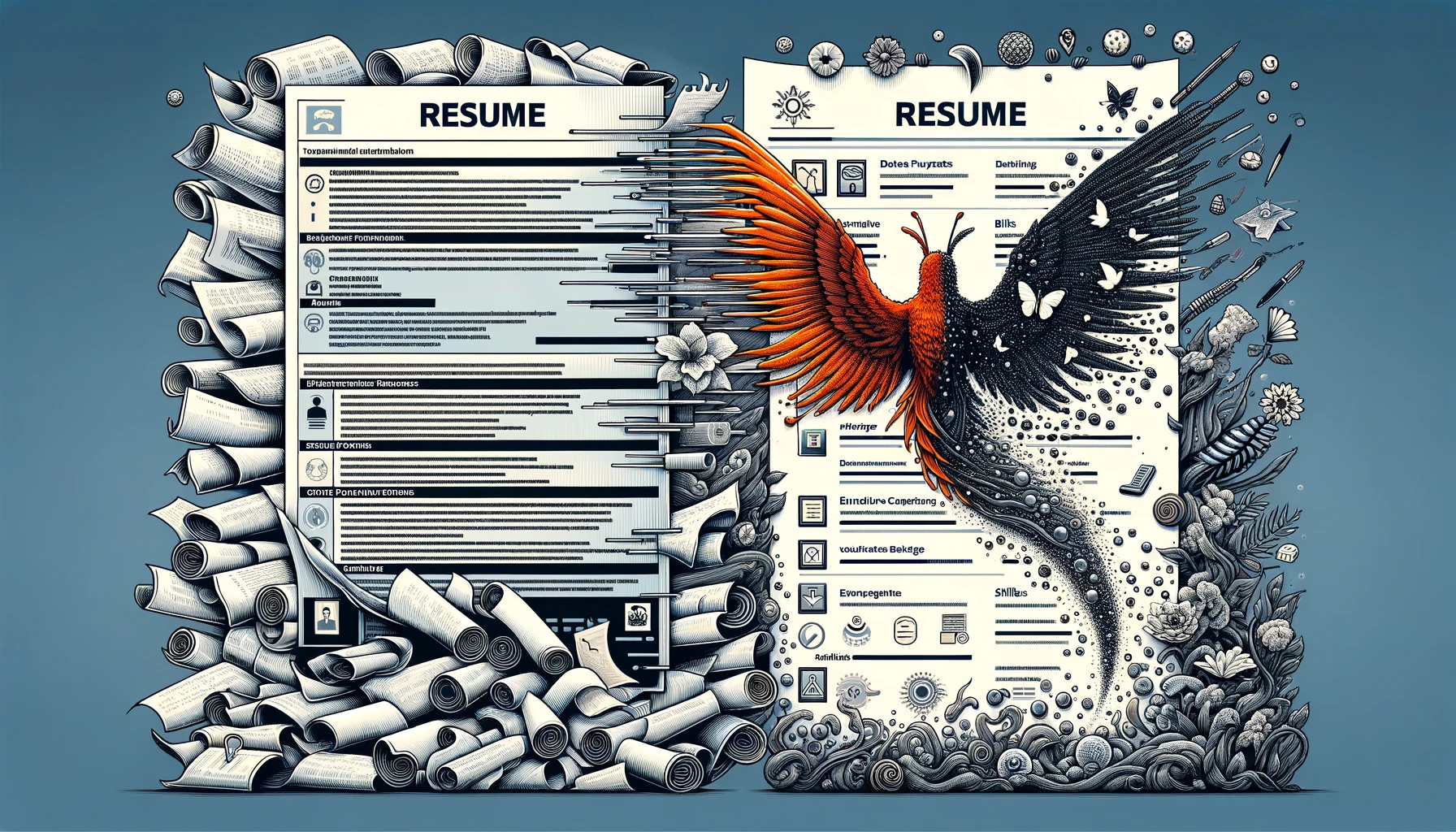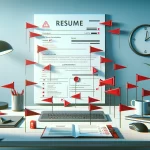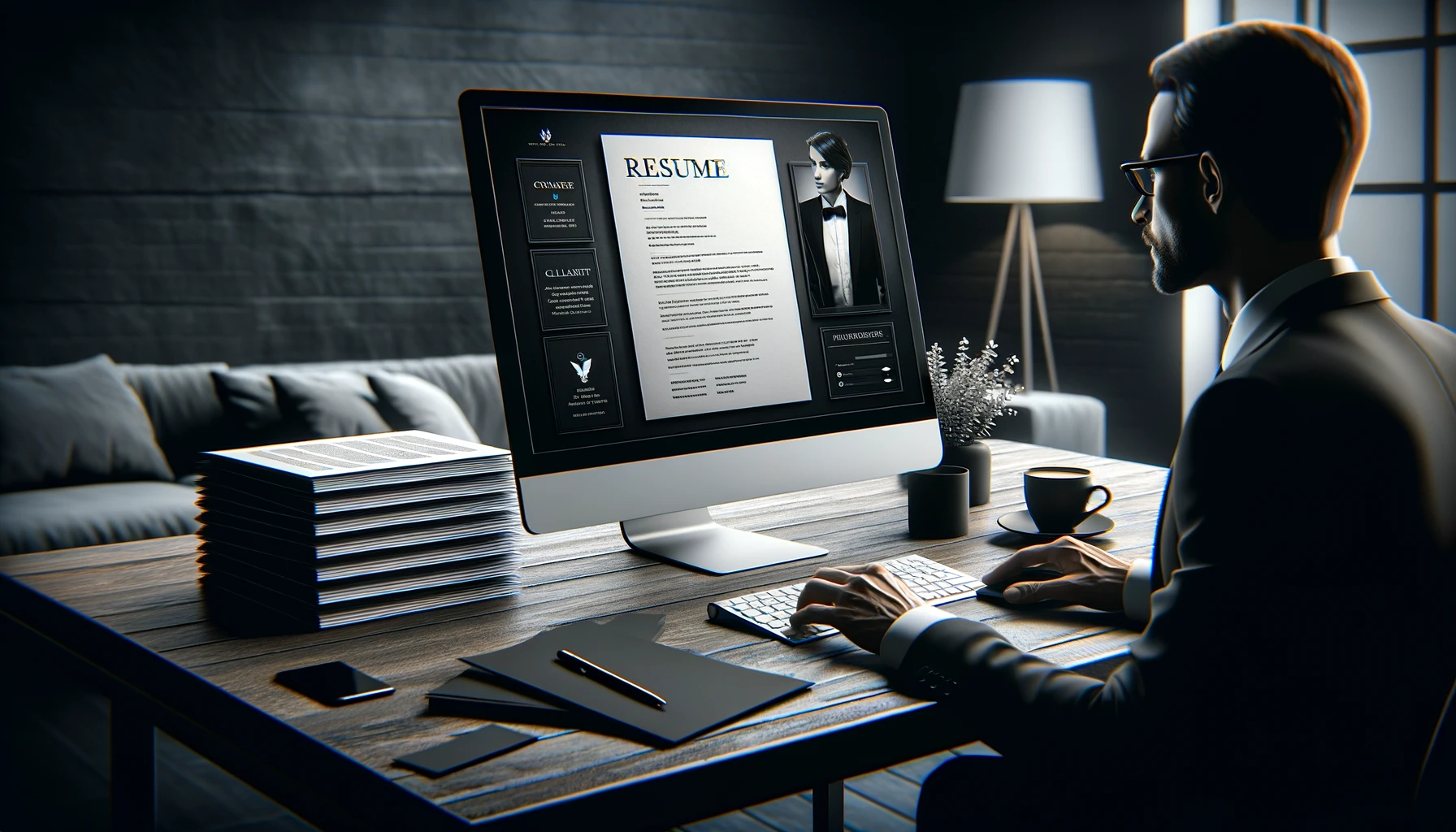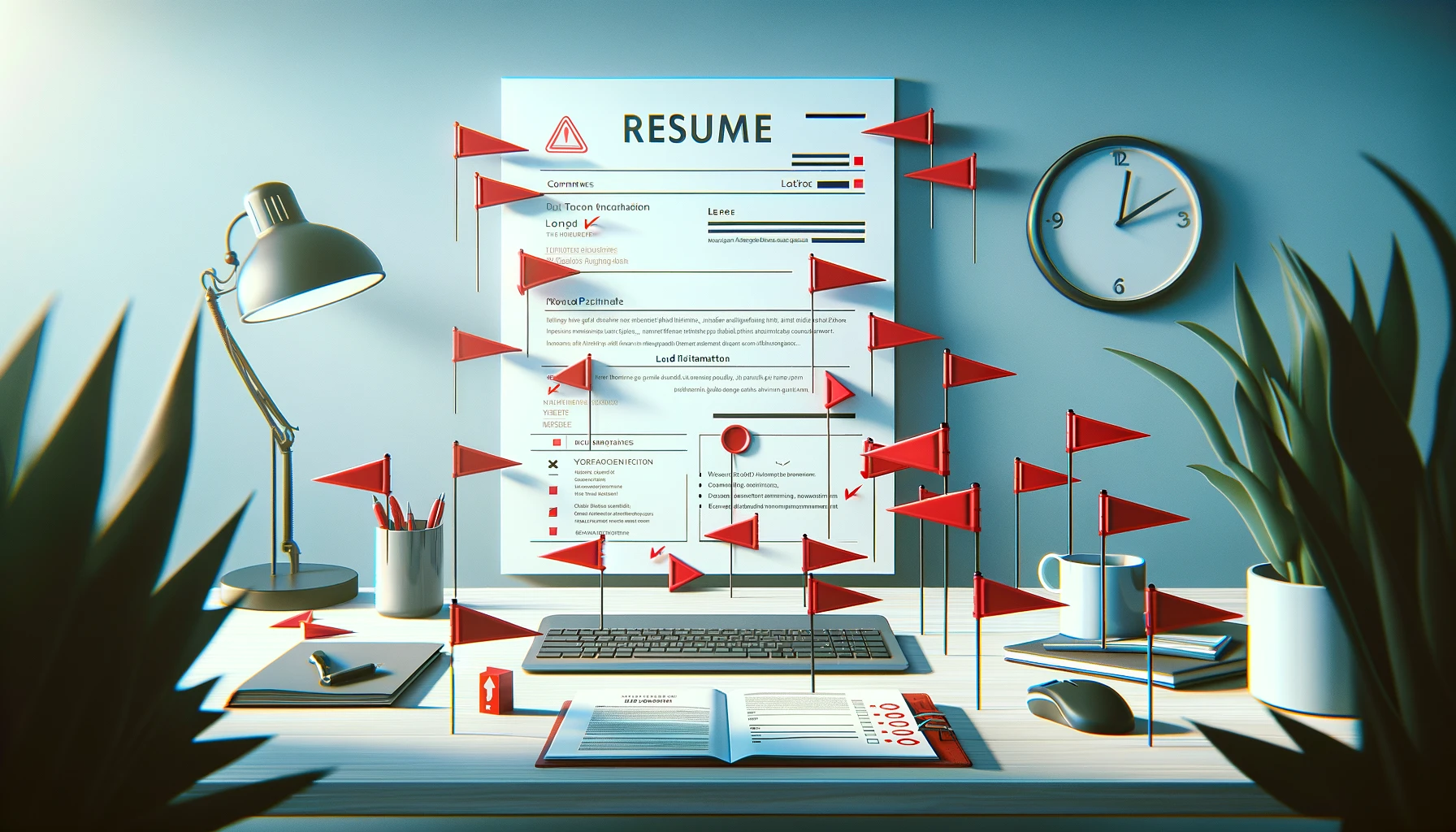In a competitive job market where first impressions can make or break your chances, the humble resume stands as your initial ‘hello’ to potential employers. Yet, in our rapidly evolving professional landscape, the traditional black-and-white CV may no longer cut it.
A well-designed resume is not just a piece of paper; it’s your personal brand encapsulated in a single page. It speaks volumes about who you are, what you bring to the table, and perhaps most crucially, how seriously you take your own career.
Think of a meticulously crafted resume as your secret weapon in the battle for that dream job – an artful blend of style and substance that does more than just list past roles and responsibilities. It’s a visual storybook showcasing your skills, achievements, and aspirations with flair and finesse.
Beyond being merely functional paperwork for HR departments to sift through, think of your resume as a canvas where colors of competency and fonts of experience converge to create an impressive portrait of YOU – one that demands attention amid stacks of mundane applications.
So why settle for bland templates when you could embark on a transformative journey toward Resume Redesign Revolution?
This isn’t just another article doling out generic advice; buckle up because we’re diving deep into proven strategies that will help elevate your resume game from standard to standout.
Are you ready to harness the power of design to command attention and pave the way towards exciting career opportunities? Let’s unlock those doors together!
Redesigning Your Resume: Mastering Layout, Formatting, and Structure
When it comes to revamping your resume, the layout, formatting, and structure play a crucial role in catching the eye of potential employers.
Start by adopting a clean and organized design that is visually appealing yet professional. Utilize white space effectively to avoid overwhelming the reader with text-heavy sections.
Consider using bullet points to highlight key achievements and skills, making it easier for recruiters to skim through your resume quickly. Remember that simplicity is key – aim for a balance between creativity and readability.
Next, focus on the formatting elements to ensure consistency throughout your resume. Stick to one or two fonts that are easy to read and maintain uniformity in font size for different sections.
Use bold or italicized text strategically to emphasize important information such as job titles or company names.
When it comes to structure, consider incorporating relevant subheadings like Professional Experience or Education to guide the reader through your qualifications seamlessly.
By structuring your resume thoughtfully, you not only showcase your professionalism but also make it easier for hiring managers to navigate through your credentials effortlessly.
Lastly, pay attention to details such as margins, alignment, and spacing within each section. Consistency in alignment can enhance the overall aesthetic appeal of your resume while ensuring a polished look. Experiment with different layouts that allow essential information like contact details and key skills to stand out prominently.
Remember that an impeccably structured resume reflects your attention-to-detail and showcases your commitment towards presenting yourself in the best possible light. By mastering layout techniques along with thoughtful formatting choices, you pave the way for a striking first impression that sets you apart from other applicants.
Crafting a Powerful Narrative: Elevate Your Resume with Strategic Keywords
In today’s competitive job market, the strategic use of keywords in your resume can be a game-changer. Gone are the days when recruiters skimmed through resumes manually; now, many companies utilize Applicant Tracking Systems (ATS) to scan and filter applications based on specific keywords.
To stand out from the crowd, it’s crucial to align your resume with the job description by incorporating relevant industry buzzwords, technical skills, and accomplishments that mirror the employer’s requirements.
By strategically peppering your resume with these essential terms, you not only increase your chances of passing through ATS screenings but also capture the attention of hiring managers looking for candidates who speak their language.
Moreover, beyond just appeasing algorithms, leveraging keywords effectively can help shape a compelling narrative about your professional journey. Instead of merely listing generic skills or responsibilities, consider weaving targeted keywords into powerful achievement statements that showcase your impact and expertise.
For instance, instead of stating Managed social media accounts, elevate it to Orchestrated comprehensive social media campaigns resulting in a 30% increase in engagement. This nuanced approach not only demonstrates your proficiency but also paints a vivid picture of how you drive results—an invaluable asset when vying for competitive roles where numbers speak louder than words.
In essence, mastering the art of integrating strategic keywords is akin to placing spotlight beams on your unique strengths and contributions within seconds—captivating potential employers at first glance and propelling you closer towards securing coveted interview opportunities.
Crafting a Stellar Resume: Showcasing Accomplishments
When it comes to standing out in a sea of resumes, the key lies in showcasing your accomplishments rather than just listing job responsibilities. Potential employers are not only interested in what you were supposed to do in your previous roles but more importantly, they want to know how efficiently and effectively you performed those duties.
By highlighting quantifiable achievements, such as exceeding sales targets by 30% or implementing cost-saving initiatives that resulted in a 15% reduction in expenses, you provide concrete evidence of your capabilities.
Remember, anyone can claim to have certain responsibilities on their resume, but what truly sets you apart is demonstrating the impact and value you brought to your past positions.
Moreover, shifting the focus from responsibilities to achievements instantly paints a clearer picture of your work ethic and contributions. Consider including specific examples that showcase innovation, problem-solving skills, leadership abilities, or any other strengths relevant to the job you are applying for.
Think about the challenges you overcame or projects where you played a pivotal role – these are the stories that will resonate with hiring managers and make them eager to learn more about how you can add value to their team.
In essence, by emphasizing accomplishments over mere duties, you present yourself as someone who goes above and beyond expectations and delivers measurable results – qualities every employer covets in a potential candidate.
Leveraging Visual Elements: Enhancing Your Resume with Icons and Infographics
In a sea of text-heavy resumes, incorporating visual elements like icons or infographics can be the key to making your application stand out. These elements not only break up the monotony of endless bullet points but also provide a visually engaging way to highlight key skills or accomplishments.
Imagine a sleek icon next to each skill on your resume, instantly drawing the recruiter’s eye and emphasizing your proficiency in a particular area. Similarly, using an infographic to showcase your career progression or project successes can capture attention and communicate complex information at a glance.
Beyond just aesthetics, leveraging visuals on your resume demonstrates a modern approach to communication that resonates with today’s digital age recruiters. In a world inundated with information, visuals are processed faster by our brains compared to text alone, making them powerful tools for creating memorable first impressions.
By strategically incorporating icons or infographics that complement your content rather than overwhelm it, you show employers that you understand the value of impactful storytelling in conveying your professional narrative effectively.
It’s not about flashy design for its own sake but about purposeful visual enhancement that elevates the overall presentation of your qualifications.
When done thoughtfully and tastefully, integrating visual elements into your resume can transform it from dull to dynamic while reinforcing key information more effectively than words alone ever could.
Consider how icons can add flair to section headers or how an infographic timeline can succinctly illustrate years of experience – these choices demonstrate both creativity and strategic thinking in crafting a resume that demands attention amid stacks of applications.
Embrace the power of visuals as allies in narrating your story on paper; after all, sometimes an image truly is worth a thousand words when it comes to leaving a lasting impression on potential employers.
Crafting a resume that resonates with each job application is akin to custom-tailoring a suit for a specific occasion – it’s all about finding the perfect fit. Gone are the days of generic, one-size-fits-all resumes; today’s job market demands personalization and precision.
When tailoring your resume, start by conducting thorough research on the company and role you’re applying for. Dive into the job description like a detective investigating clues, identifying keywords, and skill requirements.
By aligning your skills and experiences with what the employer is looking for, you can showcase yourself as the ideal candidate right from the first glance.
Moreover, tailoring your resume isn’t just about swapping keywords; it’s about storytelling. Each bullet point in your experience section should not merely list tasks but paint a vivid picture of how your contributions made an impact in previous roles.
Quantify achievements where possible to provide tangible evidence of success. Remember, recruiters are looking for individuals who not only meet but exceed their expectations – so let your tailored resume narrate a compelling story of how you are uniquely qualified to excel in that specific position within their organization.
Recap and Final Thoughts
As we conclude this journey of resume redesign revolution, it’s crucial to emphasize the power of authenticity in crafting a compelling document that truly reflects who you are as a professional. Remember, the goal is not just to impress recruiters with fancy visuals but to convey your unique value proposition effectively.
Your resume should be a reflection of your story, showcasing your achievements, skills, and aspirations in a way that resonates with potential employers.
While redesigning your resume can indeed open doors to new opportunities, it’s essential to approach this task with intentionality and finesse. Don’t just blindly follow trends or templates; instead, take the time to evaluate what sets you apart and how you can best highlight those qualities on paper.
In a competitive job market where first impressions matter more than ever, a thoughtfully redesigned resume can be your ticket to standing out from the crowd and landing that dream role. So go ahead, unleash your creativity, infuse personality into your design choices, and watch as your revamped resume paves the way for exciting career prospects!





